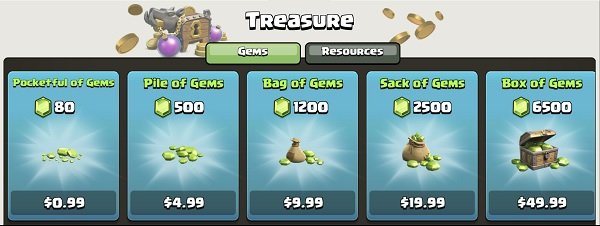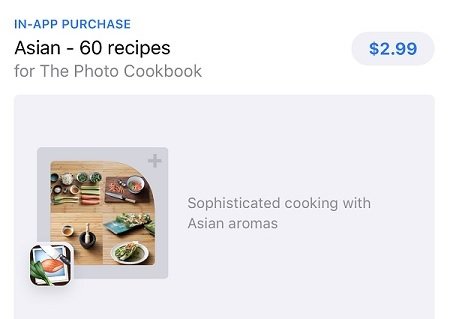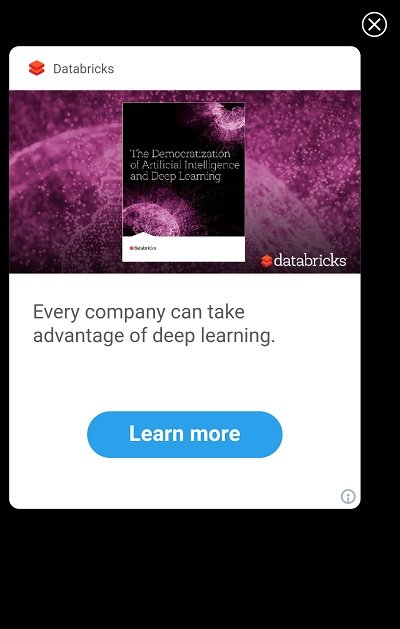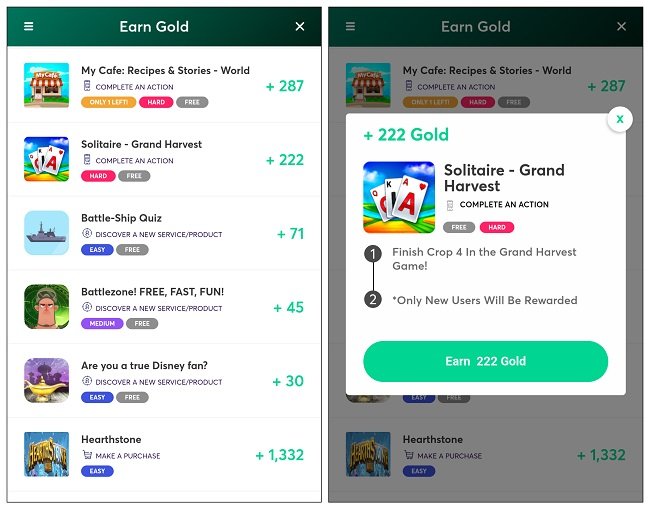No matter how much you love programming, the final goal of developing an app is to make money. And to reach this goal, you should think about the right monetization strategy even before you start coding. If you implement the right measures from the beginning, you will create a solid basis for your success.
WHAT IS APP MONETIZATION?
App monetization summarizes the measures to make money with an app. It includes processes for generating revenues from selling the app itself as a premium app, in-app purchases, in-app advertising, and monetizing user data.
Not each of these measures is suitable for every app. You must consider carefully which one you choose. This article will introduce you to the advantages and disadvantages of all monetization strategies, so you can make a proper decision.
You will learn about these 6 monetization strategies:
PREMIUM APPS
The easiest way to monetize an app is to sell it as a premium app, so only users who pay the price upfront are able to download it. According to Statista, about 9% of all apps on the iOS App Store and 4% of Android apps on the Google Play Store use this strategy.
Premium apps have one major advantage: You can calculate perfectly how much money you will make from your app (net price * number of downloads), and which maximum CPIs you can pay to your user acquisition partners (maximum CPI < net price).
But on the other hand, the income you can generate with premium apps is limited: You cannot make more than the net price.
Another disadvantage is that users cannot test the app’s functionalities before paying for it. So they have no chance to learn how the app benefits their life. This restriction can prevent users from downloading your app.
Be aware that you have to pay a commission of 30% of the app price to Apple or Google.
A premium strategy is a good approach for apps that are based on a strong brand. For instance, it is a reasonable way to bring spin-offs of successful PC or console games like Minecraft Pocket Edition or XCOM: Enemy Within to the app stores. Also, paid apps with features that no other apps provide have the chance to succeed. But in general, a new premium app will have a hard time to beat the competition of free and freemium apps.
IN-APP PURCHASES
A more common way of monetization is the freemium model. Freemium apps can be downloaded for free from the app stores. But some of their features or content are locked. To unlock them and enjoy the full functionality of these apps, users need to pay. Usually, the premium features (or content) are available in different packages called in-app purchases.
In general, freemium apps have the advantage that users can test and experience it for free. This possibility removes the payment barrier that might keep them away from a premium app and leads to higher download numbers.
In addition, freemium apps have a higher revenue potential, because users can make multiple purchases, and those who are willing to spend hundreds or even thousands of dollars on one single app can do so. The portfolio of IAPs can be expanded regularly to meet the different needs and demands of users.
But freemium apps also have a downside: People get used to free content and thus, they are less likely to spend money. So only a few users actually do in-app purchases. The conversion-to-payer for apps, in general, is between 1% and 2%. For games, this number can be significantly higher, though: According to GamesIndustry.biz, 12.3% of players buy at least IAP during their lifetime.
Another fact to consider is the commission you have to pay to Apple respectively Google. 30% of your gross revenues from IAPs will go to their pockets.
Learn more: HOW TO INCREASE IN-APP PURCHASES AND BOOST APP REVENUES
There are different kinds of in-app purchases. As all of them have specific advantages and disadvantages, it is worth to analyze them separately.
Consumables
Consumables are IAPs that provide one-time benefits to help users overcome current problems or shortages. They are widespread in gaming.
In the multiplayer strategy game Clash of Clans, players can buy “Gems” to speed up game mechanics like constructing buildings or recruiting soldiers to get an advantage over other players. Similar mechanics also exist in single-player games.

Consumable IAPs in Clash of Clans
But consumable IAPs work for non-gaming apps too: The dating app Tinder offers a consumable currency called “Superlike” that people can use to attract the attention of other users.
The advantage of consumable in-app purchases is obvious: As users can buy -in theory- limitless numbers of packages, the potential sales volume is enormous. With a proper in-app ecosystem that encourages users to buy and use premium currencies, freemium apps with consumables are much more profitable than premium apps.
On the other hand, consumables have a bad reputation, especially in games. Some users consider them a “pay-to-win” mechanic that favors paying users and ruins the fun for those who do not spend money on IAPs.
Despite the negative image, consumable IAPs are a must-have for multiplayer games and also make sense for other apps with social components, especially dating.
Non-Consumables
If users have to pay for an item once but can use it and enjoy its benefits permanently, these items are called non-consumables. Examples include collections of recipes in cooking apps, packages of exercises and tutorials in fitness apps, and also special items in games.

Non-Consumable IAP of The Photo Cookbook
The revenue potential for non-consumables is lower than for consumables. As they provide permanent benefits, every user can only buy each IAP once. But for the same reason, more users tend to accept non-consumables, because they do not have to pay over and over again to enjoy the same benefit.
If your app convinces free users of its quality because it provides a good experience, consumables can be the icing on the cake that make this experience great. So you should consider non-consumables as add-ons to customize your app and match specific needs. For many games, cosmetic items that create an individual experience for the buyer but no advantages over other players are a great way of monetization, and they enjoy a higher level of acceptance across the gamers community than consumable in-app currency.
Subscriptions
Subscriptions are the third kind of in-app purchases in-between consumables and non-consumables. After buying them, users can enjoy specific premium features for a limited period of time, but not forever. Typically, these periods are one month or one year long.
Both Apple and Google distinguish between auto-renewing subscriptions that run until users cancel them and non-renewal subscriptions that end automatically at the end of the initial period.
Subscriptions are common for apps that are content-driven and used on a daily basis. These include news, music, and video streaming, but also fitness, meditation, or self-development apps. Educational apps, for instance for learning languages, might be a good fit as well.
In contrast to consumables and non-consumables, subscriptions create recurring revenues (until they are canceled). The premise for that is a steady supply with new content that is worth keeping the subscription active or a variety of unique features that no free app in the market provides.
IN-APP ADVERTISING
Another popular strategy for app monetization is in-app advertising. By integrating 3rd party technology into their apps, app owners can show different kinds of ads to monetize their users.
Showing ads is a more reliable source of revenue than IAPs because ads do not depend on users’ will to spend money. So they allow you to monetize all users.
But most users consider ads annoying because they interrupt their experience or at least distract them from it. When reading user feedback on the app stores, you will regularly find negative reviews of users who complain about ads.
Another downside is that you only can show ads via 3rd party technology. To optimize fill rates and revenues, you will most likely need more than just one SDK, and you must commit developer resources to the implementation and maintenance of these SDKs. Besides, you need to monitor all of your partner networks constantly to ensure they do not show inappropriate ads.
You have multiple kinds and formats of ads available to choose from. They come with different advantages and disadvantages.
Banners
Banners are the oldest and still most frequently used type of ads. These small rectangle ads are either static graphics (mostly jpegs) or animated html5 files.
Usually, banners are rather small in relation to the device screen. The standard formats for banner ads are:
- Banner Phone: 320 x 50 or 300 x 50 pixels
- Banner Tablet: 728 x 90 pixels
- Medium Rectangle: 300 x 250 pixels
Banners can contain only few content, and they are not capable to transport complex messages. As they are integrated into the app’s UI, they are a much bigger disturbance to users than most other ad formats. They also come with the risk of being clicked accidentally when located too close to buttons or similar UI elements. For these reasons, banners create the worst experience of all ad types.
Interstitials
Interstitials can be static or dynamic graphics too. But in contrast to banners, they are much bigger and take the whole screen. Typical sizes for interstitials are:
- Landscape Interstitial Phone: 480 x 320 pixels
- Portrait Interstitial Phone: 320 x 480 pixels
- Landscape Interstitial Tablet: 1024 x 768 pixels
- Portrait Interstitial Tablet: 768 x 1024 pixels

Fullscreen Interstitial Ad
As interstitials fill the whole screen, they force users to focus their attention to them. Besides, in many cases, an interstitial ad cannot be closed immediately. Users have to wait a couple of seconds before they can proceed. Both of these characteristics increase the chance that users interact with the ad, or at least perceive its message. But they also carry the risk of annoying people because they interrupt their experience in a more drastic way than banners.
Videos
Videos are dynamic ads. They usually need more space than banner ads and can be as big as interstitials. Typically, video ads are between 15 and 30 seconds long.
Videos are more interesting to watch than static ads, so they create better engagement rates. But they are also intrusive to users who do not like ads, especially when they auto-play. Depending on whether they can be skipped, they can be even more annoying than static ads.
Video ads make sense for content-based apps. They can be integrated into feeds of news or social apps. In games, they make only sense as interstitial videos that play during natural breaks in the gameplay, for instance after completing a level. Otherwise, they are too intrusive. Rewarded video ads are the most user-friendly kind of ads (you can read more about rewarded ads later in this article).
Native Ads
Native ads are a modern form of ads that match the visual design of the surrounding content. They almost look like editorial content, and often, they are only distinguishable from it because they are marked as an “Ad” or “Sponsored Article”. Depending on the publishing app, native ads can be text ads, static pictures, or videos. Typical placements for native ads are email inboxes or content feeds in news, social media, or shopping apps.

Native Ad in the Social Networking App Linkedin
As native ads “camouflage” and are barely distinguishable from editorial content, they are less intrusive than traditional ads. They do not interrupt the user experience, and thus they do not annoy people in the same way that banners or interstitials do.
But on the other hand, a native ad does not pull users’ attention towards it, so users might miss the ad’s message. And they only can appear in a predetermined format that fits the app’s look, so the options for advertisers’ creativity are limited.
Native ads do not work for every app. They are great for publishers who’s apps include content feeds, for instance:
- Messengers
- Social Media
- News
- Video and Music Streaming
- Shopping
But in contrast, they do not match the look of most apps from the games and tools categories.
REWARDED ADS
Rewarded ads are a special category of ads that were developed to increase users’ acceptance of advertisements significantly. The most common kinds of rewarded ads are offerwalls and rewarded video ads.

Offerwall with Rewarded Ads in the game Lords & Knights
Unlike traditional banner, interstitial, or native ads, rewarded ads do not distract or interrupt users. Instead, they are opt-in ads that users only can consume when they voluntarily decide to do so. And people have a strong incentive to do so because they receive compensation for turning their attention to these ads. Usually, they receive an item or a bit of in-app currency that they can use within the publisher’s app, as a reward. Although the real-money value of these rewards is only a couple of cents, they encourage users to interact with the ad and thus result in much higher engagement and ad revenues than traditional ads.
Rewarded ads have a downside, though: They only work for apps that have an in-app ecosystem of non-consumable items and content packages or consumable currencies, that are beneficial to users, and thus can be used as rewards. Especially for games, rewarded ads are a must-have form of monetization. But for apps without rewards that improve the users’ experiences, they do not work because there is no way to encourage people to interact with the ads.
Learn more: WHY YOU SHOULD USE REWARDED ADS TO MONETIZE YOUR APP
DONATIONS
In case you want to keep your app free of charge as well as free of ads, you can ask your audience for voluntary support. Set up a Kickstarter campaign, a Patreon account, or simply ask for donations.
Voluntary donations are probably the most acceptable way to monetize your apps from your users’ perspective. As you offer your services for free, those who really like your app might be willing to support you.
All you have to do to enable donations is to set up the account of a payment service like Patreon or Paypal and link them from your app. So the technical efforts for this form of monetization are minimal.
The disadvantage of this monetization strategy is obvious: There is no incentive to pay but goodwill, so you have to rely completely on the generosity of your users. As there is still a strong freeloader mentality in the mobile sphere, you will most likely see only a very small percentage of people contributing to your revenues. This makes planning and optimizing revenues extremely difficult.
DATA MONETIZATION
Another way to monetize a free app without ads is by selling data. In digital marketing user data is extremely valuable to advertisers, and some of them are willing to pay you for sharing the data of your users.
As data monetization happens in the background, it does not have an impact on user experience.
To monetize your data, you need to implement the SDK of a service provider that enables the collection of data. So you need to invest developer resources.
Collecting and selling user data is a sensitive topic. Doing it in compliance with data privacy laws like the European GDPR is difficult and requires user consent.
Because of this complexity and the fact that data monetization does not create significant revenues, it should not be your primary source of income. Running with IAPs or ads is a more promising strategy for new apps. Data monetization might become interesting as soon as you have 100,000 DAUs or more.
COMBINING MULTIPLE MONETIZATION STRATEGIES
Of course, you can combine two or more of these monetization strategies with each other to optimize your income. You should consider carefully which ones you use though because not all combinations are beneficial.
Premium Apps and In-App Purchases
People who pay for a premium app expect to get all of the app’s features and content. Also, they assume that they can enjoy your app without being interrupted and distracted by ads.
So if you charge for the download, you should not:
- lock basic functionalities behind another paywall (as a non-consumable IAP or a subscription)
- sell consumable IAPs that give buyers advantages over other users
- show ads
There is one exception, though: If you add significant functionalities to your app, it might be acceptable to sell them as non-consumable IAPs. For instance, if your app is a level-based game and you add a pack of new levels, users might be willing to pay a small amount for it.
In premium games, you can also think about selling cosmetic items that have no impact on the gameplay as IAPs.
However, in general, you should not use additional monetization strategies if your app is a premium app.
In-App Purchases and Advertising
With freemium apps, you only monetize a small share of your user base. Most users will not buy IAPs. It makes sense to monetize these users too by showing them ads.
An important question to ask yourself is: Who shall see ads? Paying users might get annoyed if they see ads, and this is something you should avoid. Thus, consider showing ads only to non-payers.
If ads are your primary revenue source, you can also offer a subscription that disables ads temporarily.
In-App Purchases and Rewarded Ads
As mentioned before, rewarded ads are special because they do not harm the user experience. Actually, they can even improve it, and they can also increase your income significantly.
Combining in-app purchases, especially consumable currencies, with rewarded ads can create multiple benefits:
- You can monetize non-paying users.
- You improve the experience of non-paying users because you let them benefit from your premium items without charging them. This might result in higher retention rates.
- If you let users enjoy small quantities of premium items and their benefits, you might raise their desire to use them more often and encourage them to buy IAPs. So there is a decent chance that the payer-conversion will increase.
Data Monetization works with any other Monetization Strategy
As collecting data is possible with every app without harming the user experience, it can be combined with any other monetization strategy.
CONCLUSION
Monetization is an important issue for any app. Without income, you will not be able to maintain a proper experience for users in the long term. By choosing one or more of the strategies I introduce in this article, you are on the right way. The table below summarizes them briefly.
| Monetization Strategy | Advantages | Disadvantages | Can be combined with |
|---|---|---|---|
| Premium App | |||
| In-App Purchases | |||
| In-App Advertising | |||
| Rewarded Ads | |||
| Donations | |||
| Data Monetization |
No matter which strategy you choose, always be aware that monetization is just the final component of a successful app business. Only a happy user will contribute to creating an income for you. So, the basis for your monetary success is always a great app that delivers a great experience for your audience. Nevertheless, think about the right monetization strategy for your app early in the development process, so you can implement the right means and create a stable basis for your revenues.
